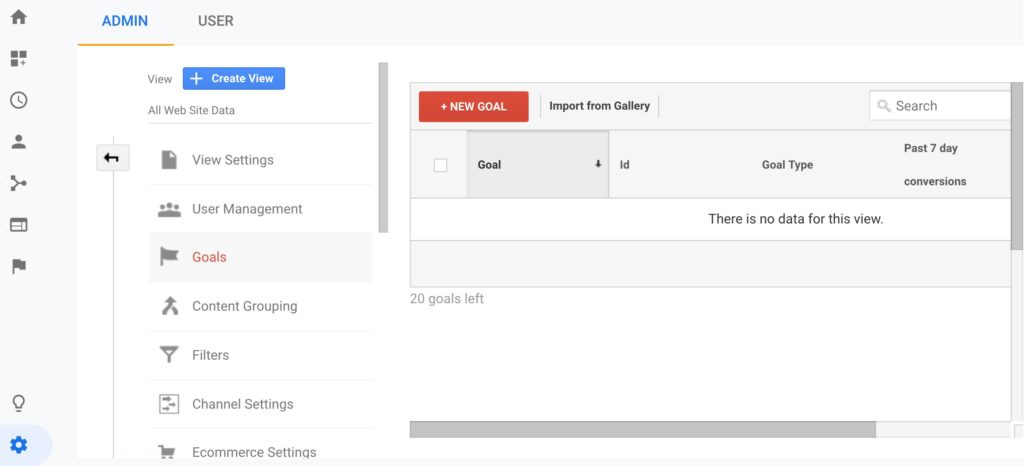Revealing the Blind Attractions: Understanding What Google Analytics Goals Can not Determine
In the world of electronic analytics, Google Analytics stands as an effective device for tracking and assessing on-line individual communications. Comprehending what Google Analytics goals can not determine is vital for obtaining a thorough sight of customer habits and interaction.
Individual Habits on External Platforms
Comprehending exactly how users connect on outside systems is essential for maximizing on the internet approaches. Outside platforms, such as social media networks, reference internet sites, and on the internet discussion forums, play a considerable function in driving web traffic to a business's web site. By analyzing customer behavior on these platforms, organizations can obtain important insights right into the efficiency of their advertising initiatives and the preferences of their target audience.
One secret facet of user actions on external systems is the recommendation resource. By tracking where the users are coming from, organizations can identify which platforms are driving one of the most traffic to their web site. This details can aid firms allot their sources better, concentrating on the systems that produce the most effective results.

Offline Communications and conversions
Analyzing user actions on outside platforms gives useful understandings into on the internet strategies; nevertheless, taking into consideration offline conversions and communications is equally necessary for a comprehensive understanding of a company's total performance. While Google Analytics succeeds at tracking online interactions, it falls brief in capturing the complete customer journey that often includes offline touchpoints. Offline conversions, such as in-store acquisitions or phone queries, play a substantial duty in many businesses' success. Neglecting these communications can result in a distorted sight of the efficiency of marketing projects and general company efficiency.

Acknowledgment Beyond Last Click
When delving right into the world of electronic marketing analytics, it becomes necessary to look past the single touchpoint of the last click for an extra thorough understanding of attribution. While Google Analytics provides beneficial understandings right into individual habits, relying exclusively on last-click attribution can be restricting - what data is google analytics goals unable to track. Acknowledgment versions that go past the last click provide a more nuanced sight of the consumer journey, taking into account all the touchpoints that cause a conversion
Acknowledgment beyond the last click enables marketers to assign credit rating to various interactions along the conversion course, offering a clearer photo of the effectiveness of various marketing networks. By checking out multi-touch acknowledgment models such as straight, time decay, or position-based this post attribution, organizations can better allot their advertising and marketing budgets and maximize their methods for maximum impact.
Understanding the impact of each touchpoint in the conversion procedure is essential for making informed decisions and taking full advantage of ROI. By welcoming attribution beyond the last click, companies can get deeper understandings into customer behavior and customize their marketing initiatives better.
Cross-Device and Cross-Browser Tracking
In a similar way, cross-browser monitoring matches cross-device monitoring by recording user behavior as they switch between different web internet browsers. Recognizing how customers engage with sites on different internet browsers can aid online marketers enhance their on-line experiences to make sure consistency and capability throughout various systems.
Qualitative Data and User Intent
Recognizing customer intent with qualitative information evaluation is vital for creating targeted digital advertising and marketing approaches that reverberate with the requirements and choices weblink of the target market. Qualitative data offers understandings into the 'why' behind individual actions, dropping light on motivations, feelings, and choices that measurable data alone can not catch. By assessing customer comments, remarks, and interactions, marketers can discover useful info regarding user intent, enabling them to tailor their messaging, content, and offerings to much better line up with what their target market is seeking.
Qualitative data also aids in comprehending the context in which customers involve with a web site or application. This contextual understanding makes it possible for marketing experts to produce more individualized and appropriate experiences, ultimately driving greater engagement and conversion rates. By delving right into individual intent with qualitative data analysis, businesses can acquire a much deeper understanding of their target market, causing more reliable advertising and marketing techniques that fulfill customers' demands and assumptions.
Verdict
To conclude, Google Analytics goals have constraints in determining customer behavior on outside platforms, offline conversions, acknowledgment beyond last click, cross-device and cross-browser monitoring, and qualitative data connected to individual intent. what data is google analytics goals unable to track. It is vital for businesses to be familiar with these blind places in order to supplement their data evaluation with other tools and techniques to gain an extra detailed understanding Discover More Here of their audience and enhance their overall electronic marketing techniques
By analyzing user actions on these systems, services can gain useful understandings right into the effectiveness of their advertising initiatives and the choices of their target audience.
Analyzing user habits on outside systems gives valuable insights into on-line strategies; however, thinking about offline conversions and interactions is just as crucial for a thorough understanding of a firm's overall efficiency.In electronic marketing analytics, moving beyond last-click acknowledgment to explore cross-device and cross-browser tracking is essential for getting a holistic understanding of user communications throughout numerous systems and tools. By examining user feedback, comments, and interactions, marketing professionals can discover important details regarding customer intent, allowing them to customize their messaging, material, and offerings to much better straighten with what their audience is looking for.
By delving into user intent through qualitative information evaluation, organizations can get a much deeper understanding of their target audience, leading to much more effective marketing strategies that fulfill individuals' expectations and demands.